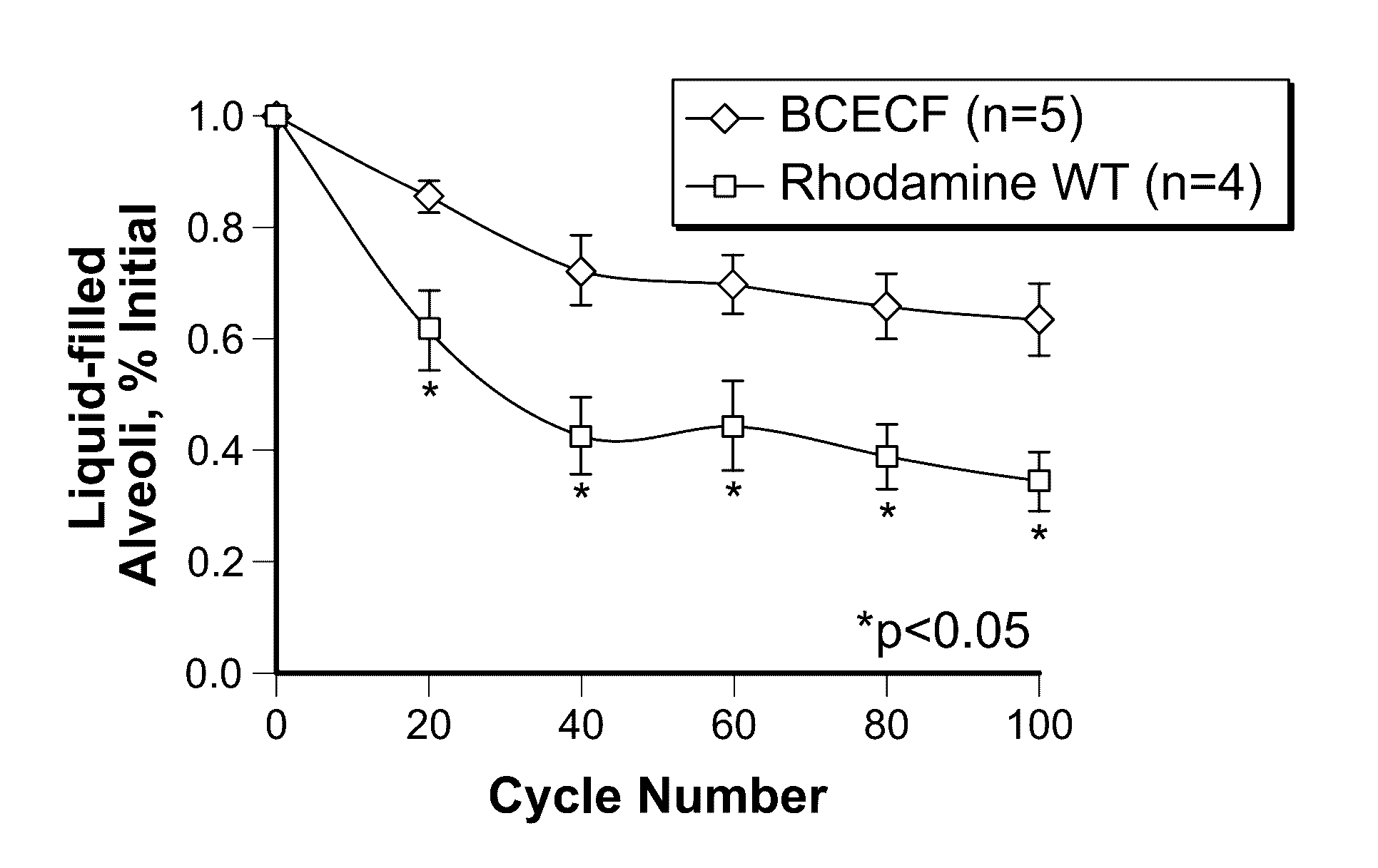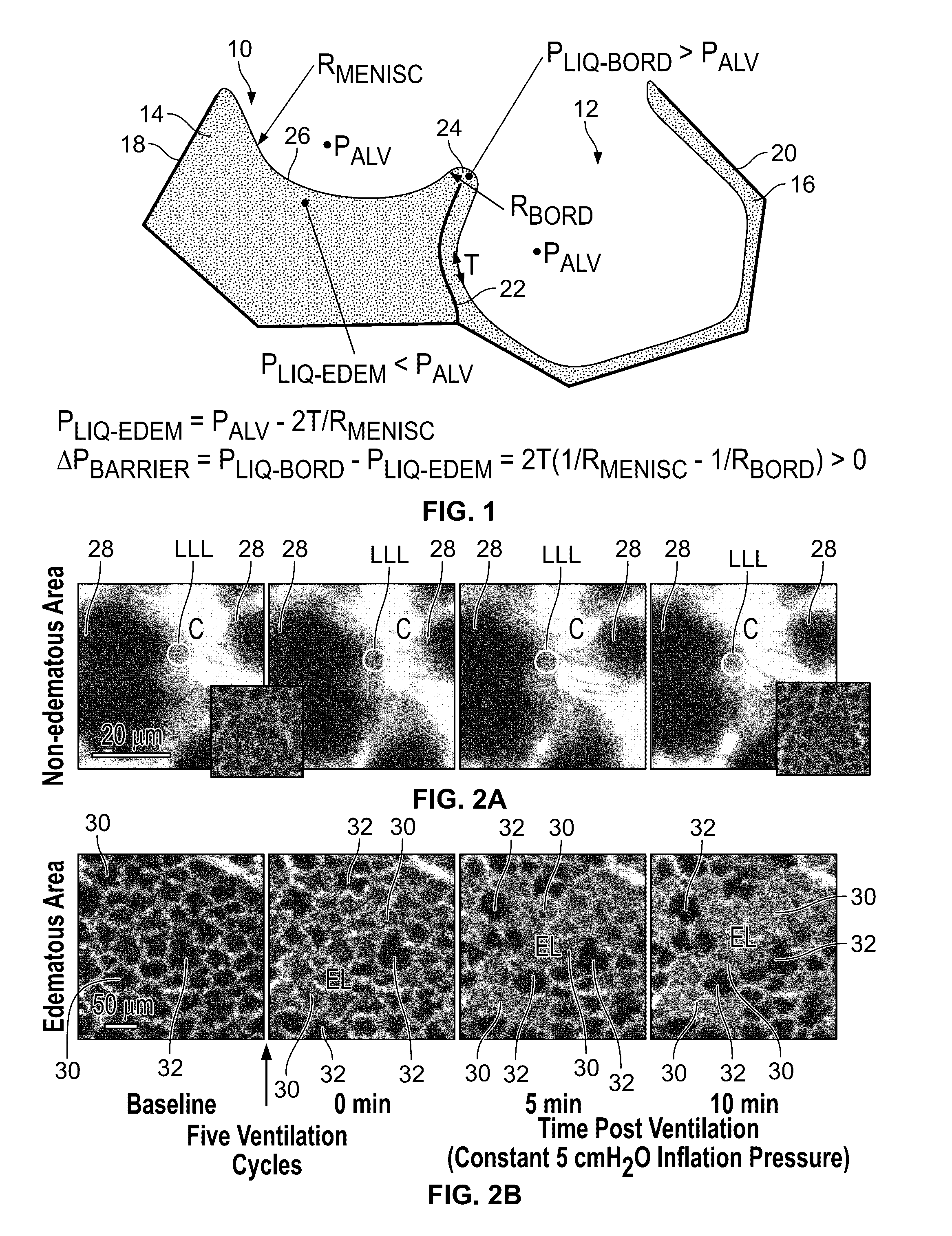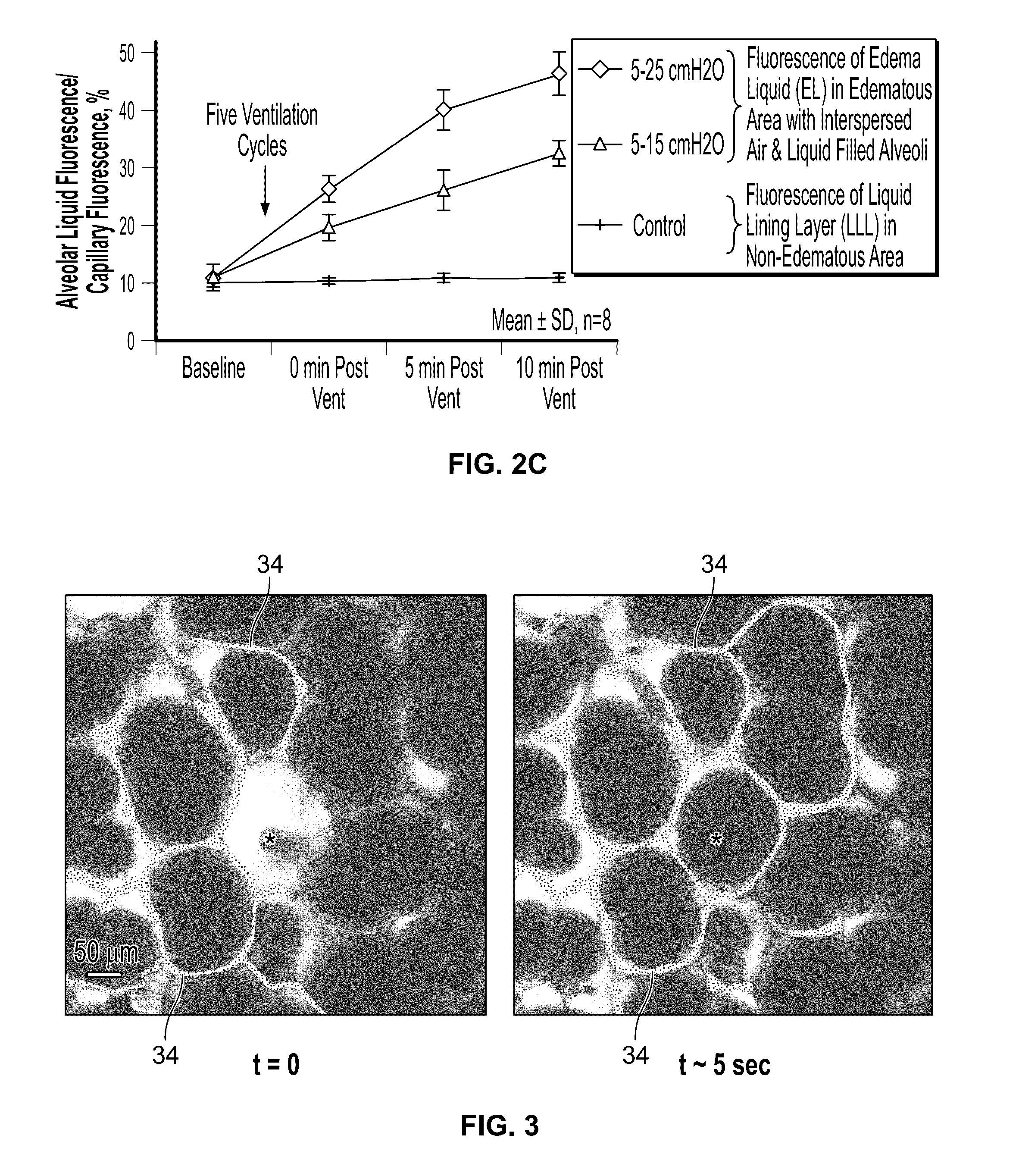Reducing ventilator-induced lung injury
a ventilator and lung technology, applied in the field of reducing ventilator-induced lung injury, can solve the problems of reduced lung compliance, difficult respiration, and difficult breathing, and achieve the effect of promoting equitable edema liquid redistribution and lessening over-distension injury
- Summary
- Abstract
- Description
- Claims
- Application Information
AI Technical Summary
Benefits of technology
Problems solved by technology
Method used
Image
Examples
Embodiment Construction
[0042]FIG. 1 is a schematic drawing of regional liquid-phase pressures in a liquid-filled (i.e., edematous) alveolus 10 adjacent to an air-filled alveolus 12, according to a novel analysis of the mechanics of alveolar edema by the inventor of the present invention. The shaded areas 14, 16 represent liquid. The dark lines represent alveolar wall 18, 20, 22, where alveolar wall 22 is also a septum 22 between the liquid-filled alveolus 10 and the air-filled alveolus 12. As the liquid lining layer is continuous between alveoli, such as alveoli 10, 12, the edema liquid 14 of the liquid-filled alveolus 10 is continuous with the liquid lining layer 16 of the air-filled alveolus 12. By Law of Laplace, PALV>PLIQ·EDEM, where PALV is transpulmonary pressure and PLIQ·EDEM is liquid pressure in the edematous alveolus, and the difference between the two pressures is proportional to surface tension T. Thus, pressure is greater in the air-filled alveolus 12 than in the liquid-filled alveolus 10. Du...
PUM
 Login to View More
Login to View More Abstract
Description
Claims
Application Information
 Login to View More
Login to View More - R&D
- Intellectual Property
- Life Sciences
- Materials
- Tech Scout
- Unparalleled Data Quality
- Higher Quality Content
- 60% Fewer Hallucinations
Browse by: Latest US Patents, China's latest patents, Technical Efficacy Thesaurus, Application Domain, Technology Topic, Popular Technical Reports.
© 2025 PatSnap. All rights reserved.Legal|Privacy policy|Modern Slavery Act Transparency Statement|Sitemap|About US| Contact US: help@patsnap.com



